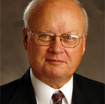Commentary on Luke 24:13-35
Our reading is the story called “The Walk to Emmaus.” It occurs right after the Easter narrative in the Gospel of Luke (24:1-12), and it takes place later in the day on Easter Sunday. The story is found only in Luke’s Gospel. The location of Emmaus has never been identified with certainty, but it was near the city of first-century Jerusalem, which was smaller than the city is today.
The story begins abruptly with the words “two of them” who are on the road to Emmaus. But who are those persons? There is no clear antecedent to “them” in 24:1-12. They are clearly not part of the eleven within the original circle of the Twelve, since the story ends with them going to report to “the eleven” what had happened (24:33). Yet they are part of a “group” of disciples (24:9) to which the women also belong who had gone to the tomb, and three of whose names are provided at 24:10 (“Mary Magdalene, Joanna, Mary the mother of James, and the other women”). In addition to the women, some of this “group” also visited the tomb on Easter morning (24:24) subsequently “and found it just as the women had said; but they did not see him,” the risen Christ. We are given the name of one of the two on the road to Emmaus. His name is Cleopas (24:18), but he shows up nowhere else in the New Testament.
In the first part of the story (24:13-27) these two persons (presumably men) have no idea who Jesus was when he approached them. He must have had normal human features (not superhuman), and they do not even catch on to his identity when he interpreted “Moses and all the prophets” concerning himself (24:27). They are aware, however, of recent events in Jerusalem. They recite to Jesus a brief summary of his earthly career (“a prophet mighty in word and deed”), his passion, and his death (24:19-20). They also know the essential Easter story. What they say in 24:22-24 is a brief recounting of the Easter narrative in 24:1-12.
It is in the second part of the story (24:28-35) that the identity and significance of the stranger becomes known to the travelers on the road. They are gathered at the table, and their guest “took bread, blessed and broke it, and gave it to them” (24:30). The words are almost identical to those in 22:19 at the Last Supper (“he took a loaf of bread, and when he had given thanks, he broke it and gave it to them”). Their likeness is even clearer in Greek; only the tenses (imperfect or aorist) and modes (indicative or participle) of otherwise identical verbs differ. Surely the eucharistic symbolism is intentional. In fact, interpreters have often pointed out that worship practices in the early church have affected the telling of the story. The event is on a Sunday, and it involves the interpreting of Scripture, proclamation, and sacrament. It is in that event that the two disciples understand who the stranger is. They now know it is Jesus, who vanishes from them. Then too they recall that their hearts burned within them while he had been teaching them concerning the Messiah on the road to Emmaus (24:32).
The story ends with the two men going to Jerusalem to report what had happened. But before they can do that, they hear the testimony of the eleven who say that Jesus had been raised and had appeared to Simon (Peter, 24:34). The statement functions to place Peter as the first believer in the risen Christ, the first apostle.
The story has theological and homiletical significance on three levels. First, like the lesson from last Sunday, it demonstrates that belief in Jesus as risen Lord was not self-evident to his earliest followers, even after his crucifixion and resurrection. The reason why people back then came to believe in him was that he appeared to them. In other words, it took divine revelation for them to believe. That was true for Peter (24:34), and it was true for the men who traveled on the road to Emmaus.
Why is it that some believe, and others do not? Martin Luther explained it all so well in his explanation to the third article of the Apostles’ Creed in his Small Catechism. There, he says, we cannot believe by our own reason or strength; it is by the Holy Spirit that one comes to believe.
Second, the setting for most persons to come to faith is Christian worship, which includes Scripture, proclamation, and sacrament. That is also where the faith of all is sustained. It is the place where Jesus continues to reveal himself. The Christian faith is born and nurtured where people share in worship through word, gesture, and earthly means, such as water, bread, wine, and tactile expressions of mutual care–the smile, the clasp of another’s hand, perhaps even an embrace.
And, finally, the story for today is one of movement. It contains at least nine verbs describing movement. The two men “are going” (24:13), Jesus “came near and went with them” (24:15), they “came near” Emmaus (24:28), Jesus “walked ahead of them” (24:28), “he went in to stay with them” (24:29), “he vanished from their sight” (24:31), and “they got up and returned to Jerusalem” (24:33). Some of the verbs tell of movements made by Jesus; others tell of the two men. Either way, both Jesus and his followers are on the move. But it is not movement for its own sake. The moves being made have a purpose, and that is to tell the story of Jesus, to interpret it, to have fellowship (communion) with Jesus and others, and to share it all with others. That is what it means to be the church.

April 6, 2008